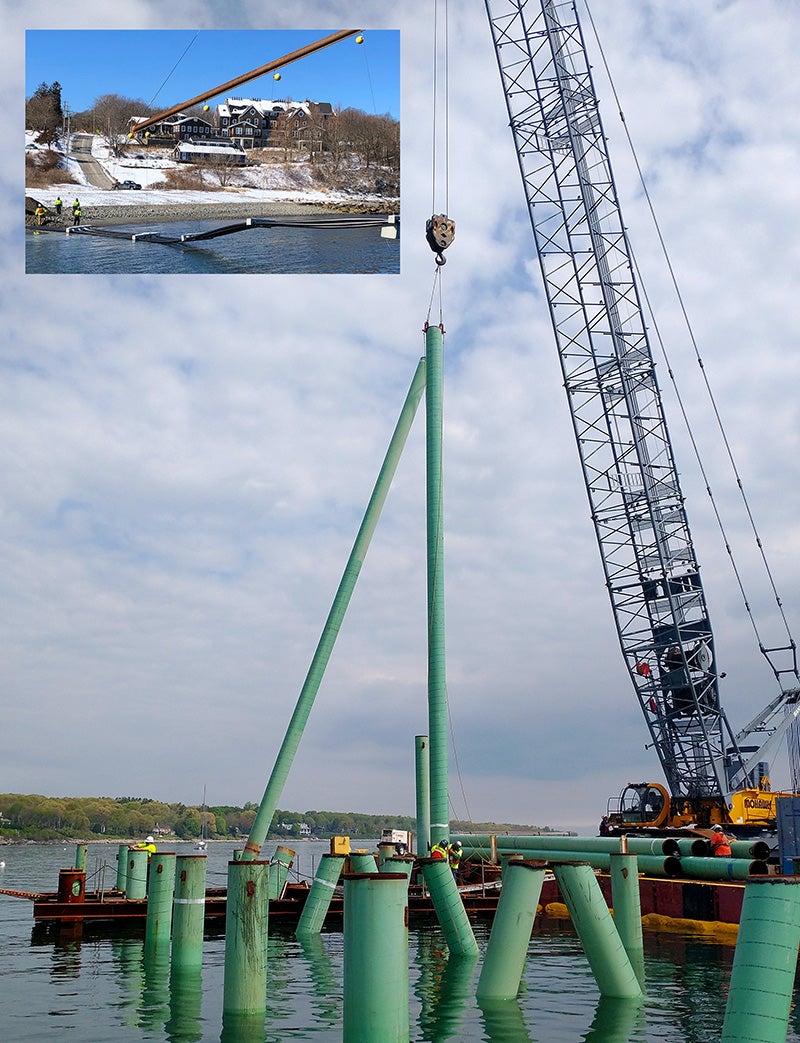
In the winter and spring, the Pier and Pumphouse Replacement project became highly visible along the shore of the Narragansett Bay Campus as the contractor moved a barge and crane into place.
Temporary indicator piles were driven in December and January. A month later, they were re-struck with the driving hammer and all of them had attained their required holding capacity. This allowed geotechnical engineers to determine the final tip elevation for the permanent piles. Originating in Colorado, pile segments have been transported by rail to Groton, Conn., welded together, then shipped by barge to the construction site. The contractor is now vibrating piles into position while making limited use of the driving hammer to overcome a thin layer of hardpan, to conquer the occasional boulder, and to set the final five feet of each pile’s depth.
Meanwhile, out of sight is far from out of mind. The seawater intake lines that lie within the footprint of the pier must be relocated. Yet, as constant circulation of seawater from Narragansett Bay is essential infrastructure for a large portion of research at GSO, it must continue uninterrupted during pier reconstruction. While the contractor drove piles a few dozen yards off shore, temporary intake lines and concrete ballast blocks were installed (inset) in preparation for construction of a new pumphouse next to the Blount Aquaculture Building. Once the pumphouse and permanent seawater intake lines are complete, a new generator will be installed for the pump system.
